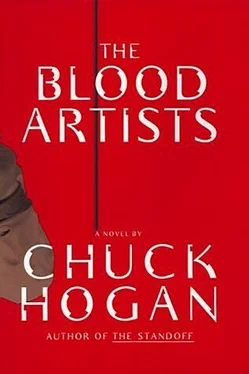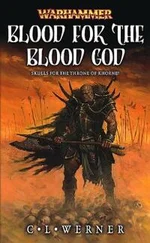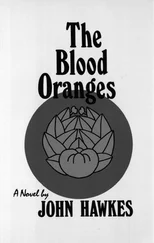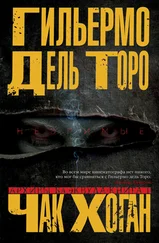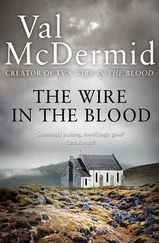I had been among the first to buy into the planned community, named Diver Bridge, a family subdivision of swimming pools and tennis courts, two managed lakes, a shopping center, a Montessori preschool, and twenty-four-hour gated security. The glossy brochure had reminded me of a time and place I was eager to get back to, my parents’ seaside retreat in Amagansett and the Long Island summers of my youth, a world away from the fortress of Manhattan. I had bought the house as something to grow into, but three years later remained the only bachelor in a gated neighborhood of families. I had played exactly one set of tennis on the Diver Bridge courts, on a bright Saturday morning two years earlier, and could only recall the pock pock of the soft yellow balls being volleyed on the surrounding courts, back and forth. The bureau was my true home.
I stood tiredly and went to the bathroom to change the bandage on my throbbing palm, casually, so as to preclude any examination. Afterward I snapped off the light and stood in the second floor hallway, in the silence and the darkness of the half-empty house.
I forced myself to cook dinner, then sat down to face it. My chagrin and embarrassment at my actions at Orangeburg were peaking. The entire incident now seemed a blur. I knew that the risk of infection from a needle stick exposure was statistically less than two tenths of one percent.
My food was still untouched when I stood again and brought the dishes to the sink. I returned to snuff the candle I had lit, and left my sunken thumbprint in the soft white scoop of wax. That night I slept poorly, thrashing beneath the sheets, dreaming repetitively of soft yellow tennis balls being endlessly volleyed.
Clifton Road began as a leftward fork at Dusty’s BBQ restaurant. It was a country road like any other outside the city limits of Atlanta, winding lazily and buffeted with leafy trees and founded upon a clay dirt tinged red as though mixed with rust or Tabasco or old blood. Emory University climbs out of the roadside like a city growing out of sand, a sprawling southern school of old homes and towering white stone buildings. It was the university’s donation of fifteen acres in the early 1940s for the establishment of a government agency to battle malaria that planted the seed of what was now the Bureau for Disease Control.
The main BDC campus sloped down from the roadside halfway along Clifton like a fortress founded upon one square block. Old Building One, the brick-and-mortar former entrance, was dwarfed on the right by the bureau’s flagship, Building Sixteen, formed of smooth concrete and mirrored glass, its six-story face broadly curved and sky-reflecting. A jumble of smaller, ill-fitting buildings led down to the rear perimeter fence and its posted warnings U.S. GOVERNMENT PROPERTY, NO TRESPASSING abutting the pristine university playing fields and exhausted southern houses of Emory’s fraternity row.
Sixteen was the main administrative building of the BDC. Its twenty-first-century face, the horizontal bands of sky-reflecting windows familiar to news viewers, stood out along winding rural Clifton Road like a temple materializing in a field of wheat. Just across the street from Sixteen was the small DeKalb County Firehouse, which was how I always thought of us at the bureau, as firefighters, responding to alarms from around the world and dousing incipient threats.
The BDC had for years been the largest federal agency headquartered outside greater Washington, D.C and Building Sixteen was its executive seat. Its laboratories were conference rooms, its remedies financial and political. Attaches from other international disease-fighting organizations such as Parton Down, the Pasteur Institute, the Tropeninstitut in Germany, and the University of Anvers in Belgium, convened there regularly.
The office of the director was the largest in the building, a corner suite, second-floor rear, with a sweeping view across miles of treetops — a lazy current of green leaves in summertime — to the downtown Atlanta skyline. The push of a button activated vertical blinds, and a shadow, like a theater curtain rising, crawled across the room.
It was from there that I oversaw the Orangeburg investigation. Every scrap of information generated on-site was routed through the notebook tablet on my desk, from individual patient case histories and specific treatments prescribed, to hospital ventilation contractor’s records and regional disease statistics going back twenty years. All my regular duties were postponed as I consumed each scrap of information, hungrily, drawn in by the devastation of the outbreak as well as its peculiarities. Such as:
An asterisk from a footnoted chart on page seventeen of a poorly written thirty-page report, noting that four of the early-stage afflicted catatonics were on different treatment protocols from the rest. Each had been receiving five hundred milliliters every eight hours of one of three different types of blood sera, code-named, and therefore still in the research stage, MILKMAID, BLOSSOM, and LANCET, with MILKMAID being administered to two patients simultaneously. The names were strange but meant nothing to me, and I posted inquiries on the codes and ran an open search of the BDC net, yielding no answers. None of the sera was registered with the Laboratory Branch, and therefore none had been submitted to or approved by the FDA. This was irregular. I began with Special Pathogens and traced the code names to its Epidemic Intelligence Service under development by a “Dr. Christian,” the same pseudonym we had used in the medical journal article detailing the attributes of Peter’s immune system nearly a decade ago. Whether he had anticipated my investigation and was flaunting his disregard for procedure, or simply thought I would not bother to pursue the matter, I took his derisive alias for an insult. The case scientist for these irregular blood serum projects was none other than Peter Maryk.
I punched up Bobby Chiles’s office down the hall. Bobby was that rare breed of public servant, the brilliant bureaucrat. He had come into the BDC relatively late in his medical career following a brief period of specialization in the family practice of podiatry. He loved medicine and loved science, but was better suited to administration than administering. Bobby was a trusted confidant.
“The Special Pathogens budget,” I said. “Did you ever break through those numbers?”
He shrugged a shrug that was a nonanswer. “They balanced.”
I did not like what Special Path had become. It was a clandestine service operating within and yet apart from the bureau, accountable to no one except Peter Maryk. Peter did A the hiring and firing and captained every investigation himself, and the loyalty of his people, such as Freeley, was fierce. I had allowed him too much free rein.
Bobby was typing. “I’ll punch up the budget numbers and shoot them on over to you.”
“Good. Let’s meet for lunch, see what we come up with.”
Bobby looked out from my screen. “Lunch?” he said. “Stephen, it’s after six.”
So it was. It had grown dark outside, and my office lights had compensated, coming on dimly without my noticing. The work day had gotten away from me.
I went home and opened the Special Path budget on my tablet, but as intense as my concentration had been at the BDC, I found it nearly impossible to focus at home. I got up and wandered throughout the downstairs area, the dim kitchen, the media room, and then, remembering the exuberance of that night in Stockholm, went to the bar and poured myself a drink. I found my way upstairs and patrolled the empty bedrooms of my unfinished house, pausing before one of the southwest-facing windows overlooking Diver Bridge to Atlanta. Darkness blanketed the glowing halo of the distant city.
Читать дальше
